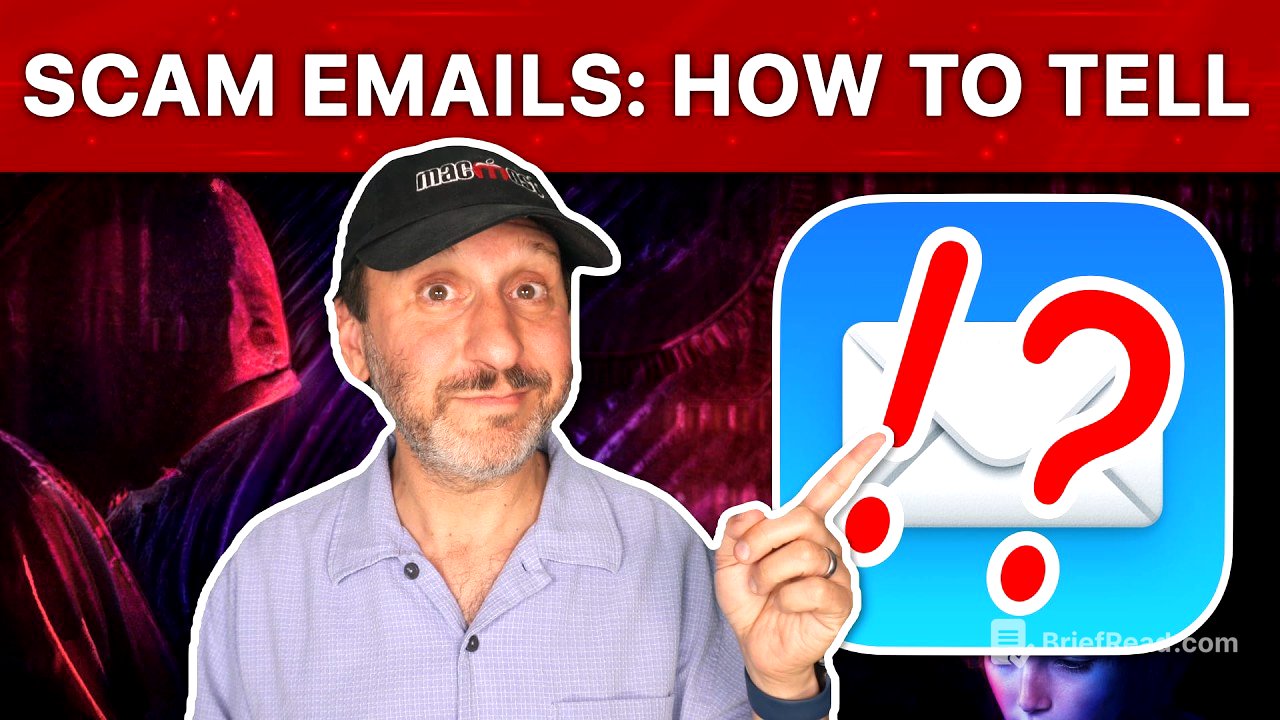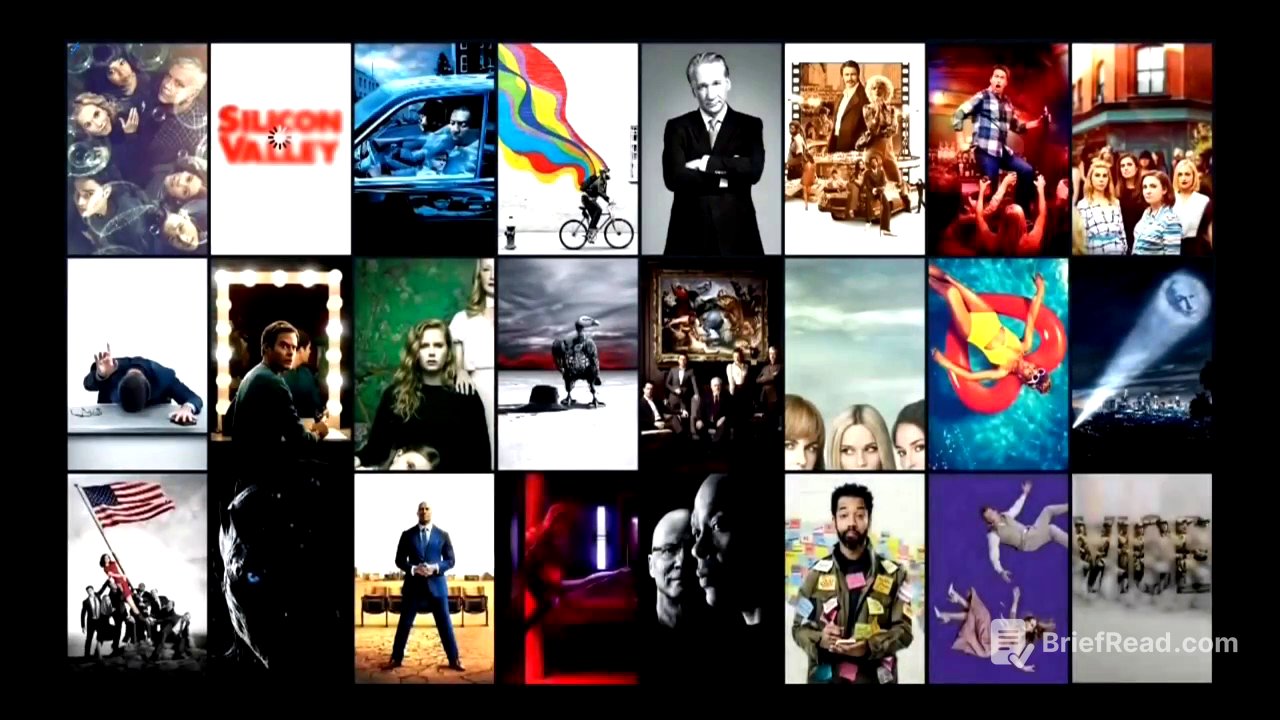TLDR;
This video provides a comprehensive guide on how to identify scam emails by examining various elements within the message. It emphasizes the importance of verifying the sender's email address, scrutinizing links, researching phone numbers, and being wary of generic greetings and poor grammar. The video also highlights common scam tactics such as creating a sense of urgency or offering deals that seem too good to be true. It advises viewers to independently verify information by contacting companies directly through official channels rather than relying on the information provided in the email.
- Verify sender's email address and domain.
- Scrutinize links by hovering over them to reveal their true destination.
- Research phone numbers to confirm their legitimacy.
- Be cautious of generic greetings, poor grammar, and urgent language.
- Independently verify information by contacting companies directly.
Intro [0:00]
The video introduces the topic of identifying scam emails and emphasizes the importance of carefully examining different parts of a message to determine its legitimacy. It sets the stage for providing various techniques to help viewers distinguish between real and fraudulent emails.
Check the From Email Address [0:27]
The first step in identifying a scam email is to check the "From" email address. The displayed name can be deceiving, so it's crucial to reveal the actual email address behind it. An email from a legitimate bank should come from the bank's domain, not a personal account like Gmail or Yahoo. Hovering over the name or clicking on it in Mac Mail reveals the true email address, which can help determine if the email is genuine.
Everything Can Be Faked [2:00]
It's important to understand that while these techniques can help identify scam emails, even if everything checks out, it doesn't guarantee the email is legitimate. Scammers can fake names and email addresses, so caution is still necessary. Detecting an incorrect "From" email address is a strong indicator of a scam, but the absence of this issue doesn't mean the email is safe.
Examine the Links [3:04]
Scam emails often contain links to fraudulent websites designed to steal personal information. Before clicking on any link, hover over it to see the actual URL. On iPhones, tap and hold the link to reveal the URL. Verify that the domain matches the expected website. Scammers may use deceptive text for links, so always check the actual destination.
Research Any Phone Numbers [4:46]
Be cautious of phone numbers provided in emails, as the goal may be to get you to call a scammer. Verify the number by searching for the company's official customer service number and comparing it to the one in the email. Additionally, search the number online to see if others have reported it as a scam.
Two Truths And a Lie? [5:16]
Scam emails often mix true and false information to appear legitimate. For example, the "From" email or some links might be real, while a phone number is fake. This tactic aims to build trust in one aspect to make you more likely to believe the false information. Scammers only need a small percentage of recipients to fall for the scam to be successful.
Look For Generic Greetings [5:55]
Scam emails frequently use generic greetings like "Dear Customer" or an email address instead of your name. Legitimate companies that you do business with typically know your name and will address you accordingly. A generic greeting is a red flag indicating the email is likely a scam.
Look For Bad Grammar Or Odd Phrases [6:52]
Poor spelling and grammar are common in scam emails. Look for weird phrasing, incorrect spellings, grammar mistakes, or spellings from different regions. Professional companies usually ensure their emails are well-written and error-free. Scammers often don't prioritize these details because they send mass emails and still get enough responses to make it worthwhile.
Odd Formatting And Graphics [8:06]
Scam emails often have poor formatting and graphics, such as pixelated logos or unusual backgrounds. Compare the graphics and formatting to previous legitimate emails from the same company to identify inconsistencies. These visual cues can help you spot a fake email.
Beware Of Urgency [8:46]
Scam emails often use urgent or threatening language to create a sense of panic and bypass your normal caution. Phrases like "contact customer support immediately" are common tactics to make you act quickly without thinking.
Too Good To Be True [9:13]
Be wary of emails offering prizes, refunds, or money. These "too good to be true" scenarios are designed to get your information. Scammers may ask you to pay money to receive a larger sum, but it's always a scam. You don't typically win prizes or receive unexpected payments via email.
10. Recognize Common Ploys [10:34]
Familiarize yourself with common scam tactics, such as emails claiming your account has been suspended or that there has been unauthorized account access. Other ploys include fake invoices, receipts for unrecognized purchases, or notifications from government agencies about unpaid fees or taxes. Package delivery issues and job offers are also frequently used in scams. Messages claiming a virus has been detected on your device are also common scams.
What To Do If You Aren't Sure [13:20]
If you're unsure about an email, first determine if the sender or company is real and if you've done business with them. If not, delete the email. If it is a real company and you recognize it, decide if you want to investigate further. If you choose to investigate, do not click any links, call any phone numbers, or reply to the message.
How To Properly Investigate Further [14:19]
To investigate safely, go directly to the company's website or service through a known link or a web search. Log into your account and check for any notifications. If it involves a bank or credit card, call the number on the back of your card. Always stay vigilant, keep up-to-date on the latest scam techniques, and never assume you're too smart to be scammed.









